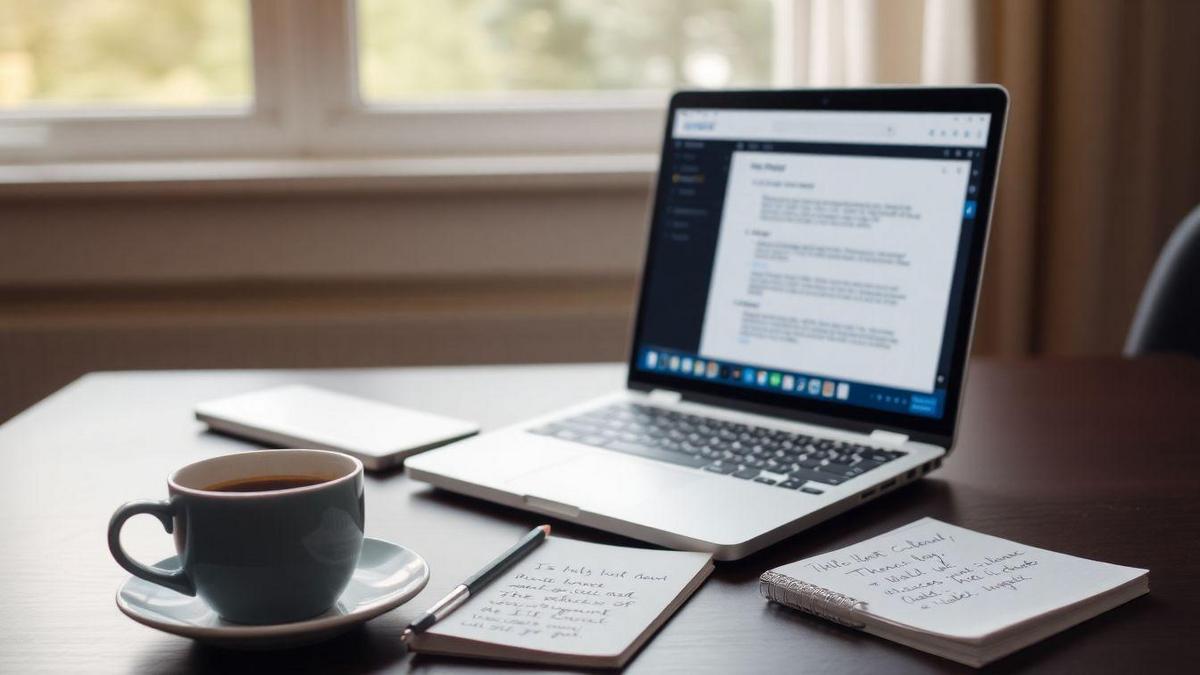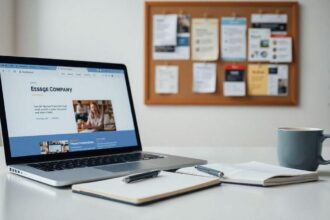Crafting impactful follow-up emails after marketing job interviews is essential for standing out. I want to share why timing is everything when you hit that send button. The right moment can grab attention and boost your response rates. Together, we’ll explore the best times to follow up, how to create a perfect message, and tips to avoid common mistakes. Get ready to enhance your email skills and increase your chances of landing that dream job!
The Importance of Timing in Follow-Up Emails
When to Send Your Follow-Up Email
I can’t stress enough how crucial timing is when I send my follow-up emails. After a marketing job interview, I make it a point to send my email within 24 to 48 hours. This timeframe keeps me fresh in the interviewer’s mind. If I wait too long, my message can get lost in the shuffle, and I risk losing my chance to stand out.
The Impact of Timeliness on Response Rates
When I send my follow-up email right after the interview, I see a significant increase in response rates. Studies show that emails sent within the first 24 hours have a much higher chance of being read. It’s like striking while the iron is hot! If I wait too long, I might miss my window of opportunity.
Best Times to Send Follow-Up Emails
I’ve learned that not all times are created equal when it comes to sending emails. Here’s a quick table to guide me on the best times:
| Day | Best Time |
|---|---|
| Monday | 10 AM – 12 PM |
| Tuesday | 10 AM – 12 PM |
| Wednesday | 10 AM – 12 PM |
| Thursday | 10 AM – 12 PM |
| Friday | 10 AM – 12 PM |
From my experience, sending emails early in the day or right after lunch makes a huge difference. People are more likely to check their emails when they first arrive at work or after they’ve had a break.
Crafting the Perfect Message for Impactful Follow-Up Emails
Key Elements of an Effective Follow-Up Email
When I think about crafting impactful follow-up emails after marketing job interviews, a few key elements come to mind. First and foremost, I need to express gratitude. A simple “thank you” can go a long way. It shows I appreciate the time the interviewer spent with me.
Next, I always make sure to reference something specific from our conversation. This not only shows that I was engaged but also helps the interviewer remember me better. For example, if we discussed a particular project, I might say, “I loved hearing about your team’s work on the new campaign.”
Lastly, I include a call to action. This could be a question or an invitation to connect again. It keeps the conversation going and shows that I am still interested.
Here’s a quick table to summarize these key elements:
| Element | Purpose |
|---|---|
| Express Gratitude | Shows appreciation |
| Reference Conversation | Helps them remember me |
| Call to Action | Keeps the conversation alive |
Personalization Techniques for Better Engagement
Personalization is my secret sauce for better engagement. I’ve learned that tailoring my emails makes a huge difference. Instead of sending a generic message, I focus on the individual. I might mention something I learned about the company’s culture or values that resonated with me.
For instance, if the company values innovation, I could say, I admire how your team embraces new ideas. I believe my experience in digital marketing aligns perfectly with that spirit. This kind of personalization makes my email feel genuine and thoughtful.
I also try to use the interviewer’s name in the greeting. It’s a small touch, but it makes the email feel more personal.
Using Templates to Streamline Your Email Writing
I find that using templates can really streamline my email writing. I don’t want to start from scratch every time, so I create a basic structure. This includes sections for gratitude, specific references, and a call to action.
Here’s a simple template I often use:
Subject: Thank You!
Hi [Interviewer’s Name],
Thank you for the opportunity to interview for the [Job Title] position. I enjoyed our conversation about [Specific Topic].
I’m excited about the possibility of joining your team and contributing to [Company’s Goal/Project].
Looking forward to hearing from you!
Best,
[Your Name]
By having this template, I can quickly fill in the blanks and make it my own. It saves me time and helps me stay organized.
Enhancing Your Email Communication Skills
Tips for Writing Persuasive Follow-Up Emails
When I think about crafting impactful follow-up emails after marketing job interviews, I remember that the key is to be clear and engaging. Here are some tips I’ve found helpful:
- Start with Gratitude: Begin by thanking the interviewer for their time. A simple “Thank you for the opportunity” can go a long way.
- Be Brief and Relevant: Keep your email short. Focus on what matters. Mention a point from the interview that stood out to you.
- Add Value: Share an idea or insight related to the role. This shows you’re thinking about how you can contribute.
- Include a Call to Action: Ask a question or suggest a next step. This keeps the conversation going.
Here’s a quick example of what I might write:
Subject: Thank You for the Opportunity!
Hi [Interviewer’s Name],
Thank you for the chance to discuss the marketing role. I enjoyed our conversation about [specific topic]. I believe my experience with [specific skill] could really help your team.
Do you have any updates on the hiring process?
Best,
[Your Name]
Common Mistakes to Avoid in Follow-Up Emails
While writing follow-up emails, I’ve learned to dodge a few common traps:
- Being Too Formal: I try to keep my tone friendly. Overly formal language can seem stiff.
- Ignoring Spelling and Grammar: Typos can ruin my credibility. I always proofread my emails.
- Sending Too Late: Timing is crucial. I aim to send my follow-up within 24-48 hours after the interview.
- Overloading with Information: I focus on one or two key points. Too much info can overwhelm.
Here’s a simple table to remind me of these mistakes:
| Mistake | Why to Avoid It |
|---|---|
| Being Too Formal | Can seem impersonal |
| Ignoring Spelling/Grammar | Detracts from professionalism |
| Sending Too Late | Missed opportunity for engagement |
| Overloading with Info | Can confuse the reader |
Continuous Improvement in Email Engagement Techniques
I believe that improving my email skills is a journey. I constantly seek ways to engage better. Here are a few methods I use:
- Read Examples: I study successful follow-up emails. This helps me see what works.
- Ask for Feedback: I sometimes ask friends or mentors to review my emails. Their insights can be invaluable.
- Practice Regularly: I write follow-ups even when I don’t have a job interview. This keeps my skills sharp.
- Stay Updated: I follow blogs and articles about email communication. This helps me stay current with trends.






